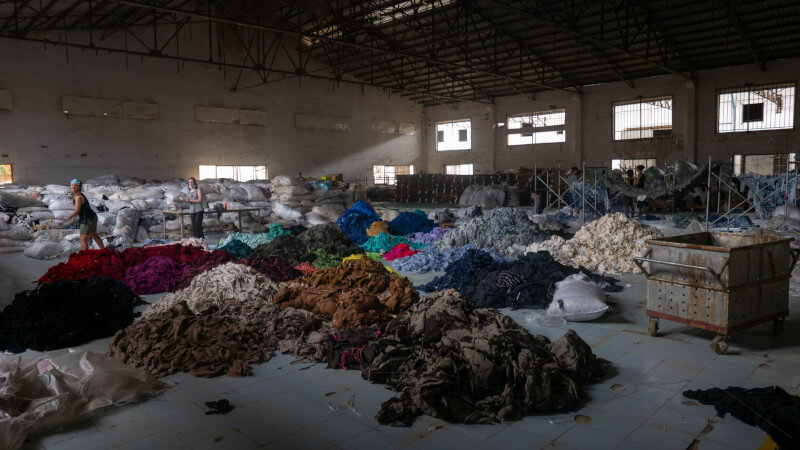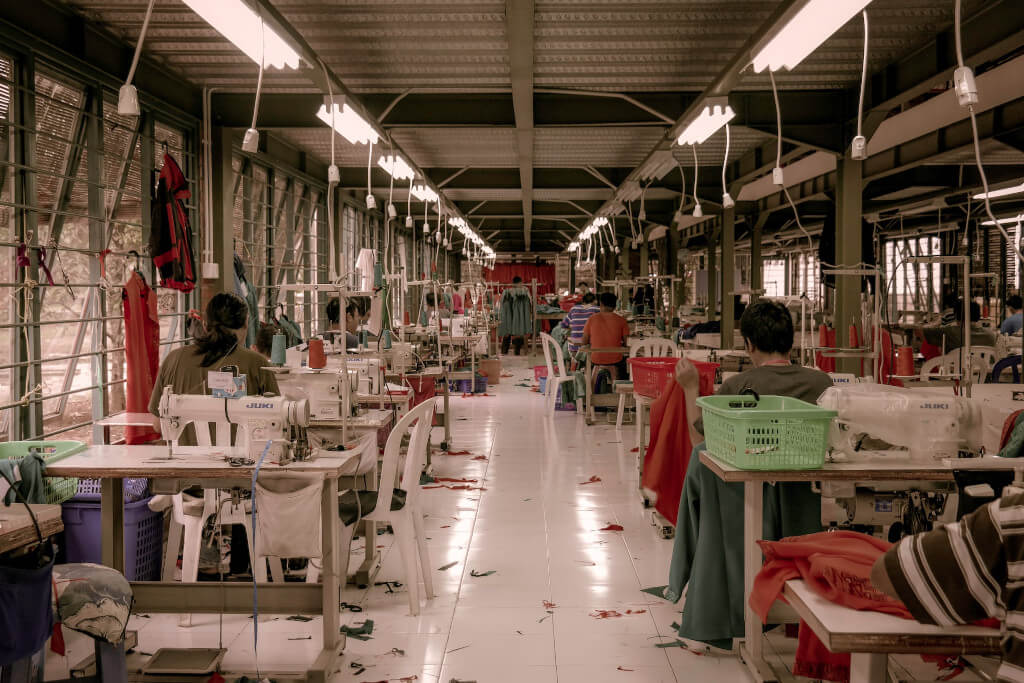In this day and age of massive discounts and inexpensive fashion, very few people stop to consider how exactly we can get our hands on the most recent styles and trends, and how we can do so at the most affordable prices in local stores or on our favorite e-commerce sites with as little hassle as possible. The laborers at the bottom of fast fashion distribution networks are often subjected to difficult conditions while they are engaged in the production of apparel.
With a total value of around $1.7 trillion globally, the fashion industry is consistently ranked as one of the top five most valuable industries in the world. It accounts for 2% of the total gross domestic product of the world. It is responsible for the livelihoods of millions of individuals and contributes to the economies of a great number of nations. However, because of the rise of fast fashion in the past twenty years, the industry has become more and more scrutinized.
The industry of fast fashion is responsible for supplying customers with new clothing that is also reasonably priced. Additionally, it makes a sizeable contribution to the economy of the entire world. It gives work to 300 million people all over the world. Additionally, it provides work opportunities for workers and farmers in the world’s most impoverished nations.
What Exactly is “Fast Fashion”?
The concept of “fast fashion” refers to the process of developing, creating, and selling clothing that emphasizes rapidly producing a significant number of clothing in a limited amount of time. This can be done in either a factory setting or a home setting. The late 1990s and early 2000s were the height of the low-cost fashion industry due to the proliferation of the internet, increased consumerism, and advances in technology.
In this region, the production of clothing is based on copying the most recent fashion trends and utilizing materials of low quality to offer consumers options that are within their price range. However, as a consequence of this, a catastrophic environmental and social effect is being caused. It is resulting in extensive environmental harm, and in some cases, it is even exploiting people or causing harm to animals.

At present, the fashion industry is responsible for more than 8% of the world’s total emissions of greenhouse gases. It is the cause of 1.7 billion tons of CO2 being released into the atmosphere all over the world. If the trend continues as it is, the number is projected to have increased by a whopping 50 percentage points by the year 2030. In addition to this, it contributes significantly to the vast quantities of discarded textiles that end up in landfills or are burned.
In addition to that, the industry is responsible for the production of twenty percent of all of the wastewater in the world. Fast fashion factories generate tons of waste and pollution in countries that do not have regulatory regimes concerning the use of toxic dyes or raw materials that are not renewable.
Increased Levels of Consumerism
In recent years, there has been a rise in consumerism, and with it, a rise in the requirements placed on consumers to keep up with current fashion and maintain parity with the world at large. As a result of consumerism’s demand for goods that are both cheaper and delivered more quickly, many businesses have been forced to adopt linear business models. When producing items of clothing for fast fashion, most brands attempt to keep their expenses as low as they possibly can.
If a buying company continues to demand cheaper clothing at a faster rate, suppliers might reduce their prices to keep their businesses afloat. This would be the case if the buying company wanted to remain relevant to its customers. This causes a ripple effect further down the supply chain, which indicates that laborers at the bottom of the distribution chain frequently have to put in long hours for a meager wage, with some cases falling as low as $1.8 per day.
It is a well-established fact that the cost of labor in developing and emerging economies is significantly lower for manufacturing industries when compared to the cost of labor in developed countries; the fashion industry is not an exception to this rule. There are several countries, including Bangladesh, India, China, and Vietnam, that are responsible for the majority of the fast fashion that is exported to the developed world.
The Potentially Damaging Effects of Fast Fashion
One of the consequences of the fast fashion industry is the use of forced labor, in which employees are required to put in extended shifts for low or no additional compensation. Sometimes employees are unable to quit their jobs because they are legally obligated to remain there because of a debt, a contract, or another form of coercion. Because of this, they are unable to break the cycle of poverty and become more susceptible to various forms of exploitation.
Second, maternity leave is frequently withheld from garment industry employees who become pregnant while working in that industry. It is approximated that women make up as much as 80% of the workforce in the garment industry. Another issue is that, even when performing the same work, women are frequently paid less than men. Workers are frequently prevented from taking breaks or being granted medical leaves because of the stringent deadlines imposed by purchasers.
For the farmers who grow the raw resources (cotton) at the bottom of the distribution chain, the issue of concern is the economic struggle generated by the corporate supremacy of the cotton industry as well as the debt accrued from investing in expensive fertilizers, pesticides, machinery, and genetically engineered seeds.

There is a significant problem with environmental contamination in regions where textile and garment factories are located. The intake of the same by the locals has led to many people having severe health problems such as cancer and developmental disorders. Dangerous dyes are being absorbed into local waterways. In addition to this, it leads to shortages of water and pollutes land that could otherwise be used for agriculture.
There were times during COVID when online retailers and manufacturers canceled or reduced orders totaling billions of dollars. In some of these cases, the orders were completely canceled. These included finished garments that were able to be shipped out immediately after being produced. At the moment, it is the norm for companies to wait to make payments for products until after they’ve been delivered.
Because of this, both the distributors and the workers of the suppliers are put in a precarious and vulnerable position. This has led to the shutting down of factories, which has resulted in a substantial unemployment rate for many garment workers. This has further pushed an already vulnerable group into a position where they face increased levels of poverty and hardship.
What Exactly is Going on Here?
As businesses come to terms with the unpredictability that can accompany a crisis involving production on a global scale, the distribution network may become more locally focused in the post-COVID period. This could have the positive effect of making distribution channels more sustainable and straightforward, but it could also have the negative effect of prolonging unemployment for people in the global south who rely on manufacturing employment.
The exploitation of workers is a problem that is being addressed by governments and non-governmental organizations (NGOs). They take measures such as enhancing working conditions in factories and providing employees with additional education on the legal protections available to them. In addition to this, they investigate allegations of abuse and take appropriate action.
Furthermore, they are collaborating with other organizations to increase awareness of the problem and to advocate for change. Although these actions are beginning to produce results, there remains a significant distance to travel. Companies need to be put under a greater amount of pressure to alter their business practices, and governments need to step up their efforts to safeguard employee rights.
What Options Do Customers Have?
Changing one’s shopping routine can be challenging because there is constant pressure from society to consume more. Therefore, customers ought to demand that companies make their distribution chains more open to scrutiny. It assists textile workers, unions, and non-governmental organizations in their efforts to urge garment companies to take action to stop abuses and help employees obtain remedies.

Customers should enlighten themselves on the subject of fast fashion and consumer culture, as well as inform their friends and family members. They shouldn’t buy new clothes unless they need to and know for a fact that they will wear the items frequently. Customers should embrace wearing the same outfits multiple times and ethical support brands. We bought to give thrift stores, donations, and upcycling their old clothes the most consideration. If they don’t plan on wearing an item of clothing more than once, they can rent it instead of buying it.



